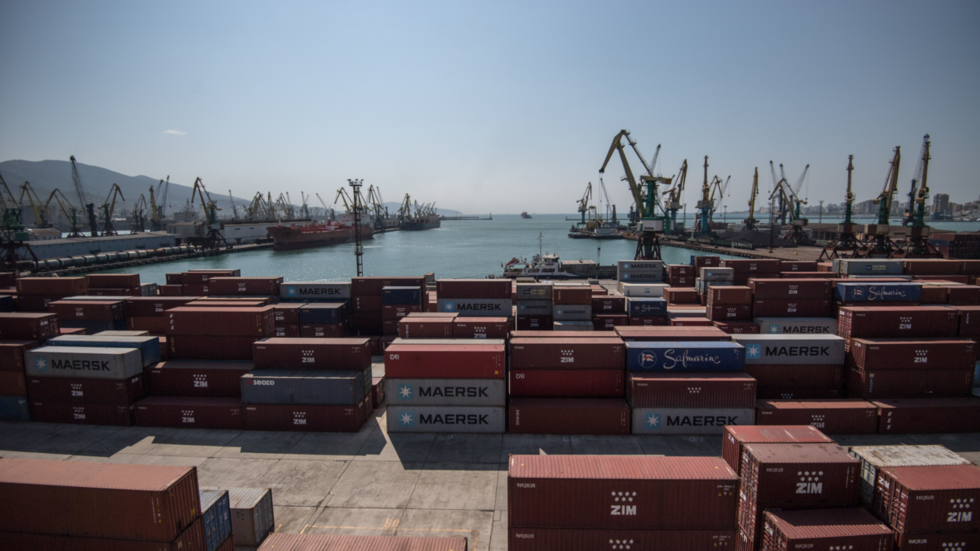Activity at the country’s major ports is now approaching pre-sanctions levels, according to the Kiel Trade Indicator
Russia appears to be regaining its position in global trade as evidenced by “surprisingly” high activity at its container ports despite international sanctions, the Kiel Institute for the World Economy has reported.
The German economic research institute released its August trade data on Thursday, stating that for the first time since last year the volume of goods unloaded at Russia’s three largest container ports is approaching the levels seen at the outbreak of the conflict in Ukraine in February 2022. The country’s three most important ports are in St. Petersburg on the Baltic Sea, Novorossiysk on the Black Sea, and Vladivostok on the Pacific coast.
According to the latest Kiel Trade Indicator, arrivals at the St. Petersburg port, Russia’s most important for containers, have jumped in recent weeks after an earlier 90% decline. Meanwhile, overall activity at the country’s ports is “surprisingly high.”
“Where the goods are coming from is not clear from the container ship movements, but Russia seems to be rejoining the world trade. This occurs despite sanctions imposed by Western nations and the falling value of the ruble,” said Vincent Stamer, head of the Kiel Trade Indicator.
The think tank did not specify the volume of containers that passed through the three ports last month, but instead provided a graph showing the year-on-year percentage change in container load arrivals.
The report came as China released data showing that its imports from Russia rose by the most ever in dollar terms in August. Beijing bought $11.5 billion worth of Russian goods last month, according to customs figures cited by Bloomberg.
Trade between the two nations has surged since last year. The Russian government expects trade with China to rise to $200 billion this year, surpassing the previous record of $190 billion reached in 2022.
The Kiel Trade Indicator estimates the trade flows – imports and exports – of 75 countries and regions worldwide, as well as world trade as a whole, based on the evaluation of ship movement data in real time.
Source: RT



